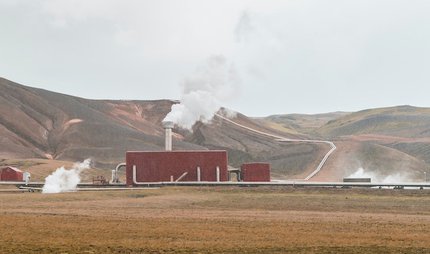Soil Regeneration In Our Changing Climate
When it comes to finding solutions to reduce greenhouse gas emissions, we think of renewable sources of energy, replacing fossil fuels with more sustainable options. There’s also another incredible resource, though, that we can utilize to help reduce emissions even further: the Earth’s soil.
When it comes to finding solutions to reduce greenhouse gas emissions, we think of renewable sources of energy, replacing fossil fuels with more sustainable options. There’s also another incredible resource, though, that we can utilize to help reduce emissions even further: the Earth’s soil.
Soil is an essential component for maintaining life on Earth. The Earth’s soil is also capable of capturing and storing copious amounts of Carbon dioxide, or CO2, through a fascinating process called sequestration. However, factors like climate change and years of human interference have currently affected the soil’s potential. But change is indeed possible. Not only can we heal the ground to grow better crops, but regenerating soil could also repair the damage from climate change to help us reach a cleaner future.
What’s in the Earth’s soil and what does it do?
Soil is crucial for life on Earth because it nourishes the plant life we need to survive. Healthy soil is made up of essential materials like water, air, and minerals. You may not realize it, but the soil is also full of life! The USDA reports that just a teaspoon of soil can have billions of microorganisms inside, even greater than the number of people living on Earth. Soil contains a natural mixture of microorganisms including bacteria, actinomycetes, protozoa, and fungi. All of these microorganisms work together to maintain a balance of life within the soil. They break down decaying plant material—also known as humus – releasing nutrients that feed surrounding plant life. Microorganisms also maintain a healthy structure in the soil. They help bind soil particles together to keep the soil loose and ‘crumbly,’ which allows for better flow of water and oxygen.
Soil is also capable of holding onto carbon through a process called sequestration. Essentially, sequestration is a process of capturing carbon from various sources and naturally storing it. Carbon is known as one of the building blocks of life and can be sequestered in a variety of ways. In terms of soil sequestration, carbon is a byproduct created as plants undergo photosynthesis. Carbon is released into the soil, which is then consumed by microorganisms to promote their growth. The more microorganisms there are, the richer the soil becomes, which produces healthy plant life.
How is soil related to climate change?
Earth’s soil used to be incredibly rich in organic matter. But microorganisms need to be replenished to keep plant life healthy, and many obstacles are preventing them from thriving. Due to the rise of modern agriculture and certain farming techniques, our soil is quickly losing the riches it once had. Soil contaminants, like pesticides and other chemical byproducts, can harm the growth of healthy soil bacteria. Spraying pesticides on croplands can destroy essential microorganisms, thus destroying future crops.
Human interference, such as tilling farmland to grow crops, has also affected the soil over time. Tilling with machinery breaks into the topmost layer of soil, which damages its natural structure and disrupts the microorganisms underneath. Disturbing the soil is like picking at a wound. The more it is messed with, the more difficult it becomes for it to fully heal. Because microorganisms are constantly being disturbed, it’s harder for them to maintain the nutrients in the soil and keep plants healthy. As a result, the soil gets ‘tired,’ and it becomes difficult to produce crops.
What does all of this have to do with climate change? Along with human interference and other pollutants, climate change is a contributor to soil degradation. This means that the soil loses its fertility to the point where it cannot sustain life. As the soil becomes even more degraded over time, it can lead to what’s known as desertification, in which the land becomes a desert. As it dies out, the soil essentially becomes dirt or dust that is unusable.
Like a vicious cycle, climate change negatively affects the soil, which then affects our atmosphere through greenhouse gas emissions. Higher temperatures mean less rainfall, often leading to extended periods of drought. When the soil dries out, it is no longer capable of storing CO2, and instead releases it back into our atmosphere. Farming techniques like tilling also increase CO2 emissions by stirring up the carbon from the ground and sending it back into the air.
If this cycle is to continue it’s estimated that all of the world’s topsoil could disappear in the next 60 years. At first glance, this may seem discouraging, but not all hope is lost for the world’s soil. A current movement is taking place, changing the way we farm: Regenerative Agriculture. If this type of farming is successful, it could soon become a major solution to climate change.
What is Regenerative Agriculture?
Regenerative agriculture is one of the solutions farmers are turning to, striving to restore the world’s topsoil. This type of agriculture heavily focuses on reducing greenhouse gas emissions, reversing climate change, and keeping our soil healthy by encouraging carbon sequestration. The primary goals of regenerative agriculture are to increase the organic matter in the soil, while also incorporating carbon back into the Earth to keep it out of our atmosphere.
One regenerative agriculture practice is using cover crops, like perennials, to protect the soil from the elements. Farmers may also refrain from tilling when planting crops. These 'no-till crops are planted right in the ground and gain nutrients from leftover plant matter. You can learn more about how these practices help the soil here. Other farms, like Apricot Lane Farms, utilize methods of bio-diverse farming, incorporating their crops into natural ecosystems rather than clearing space for farmland. Because of this unique approach of combining nature and farming, Apricot Lane Farms was able to successfully restore what was once ‘dead’ farmland.
Bringing more carbon into our soil can make a huge positive impact on our planet. Farmers can grow more crops and enhance profits. Carbon can naturally be drawn out of our atmosphere. As a bonus, the more carbon there is in the soil, the healthier crops will be, meaning our food sources will contain even more nutrients.
How can I support Regenerative Agriculture?
Anyone can play a role in soil restoration, not just farmers and ranchers. You can even apply certain regenerative agriculture practices in your own yard. Become a backyard conservationist by growing a soil-friendly garden at home. Using natural and organic methods of deterring pests from your yard is another way of being conscious of the soil. Composting helps bring organic material back to the soil while also reducing food waste. You can collect food waste in a compost bin, or a small container in your kitchen, that can later be mixed into your yard or garden soil.
If you’re unable to grow a garden, you can still help regenerative agriculture by supporting local regenerative farmers in your area. Purchasing produce and other products from these sources encourage the growth and demand for this type of farming. You can even donate to several agricultural organizations to help make a difference.


